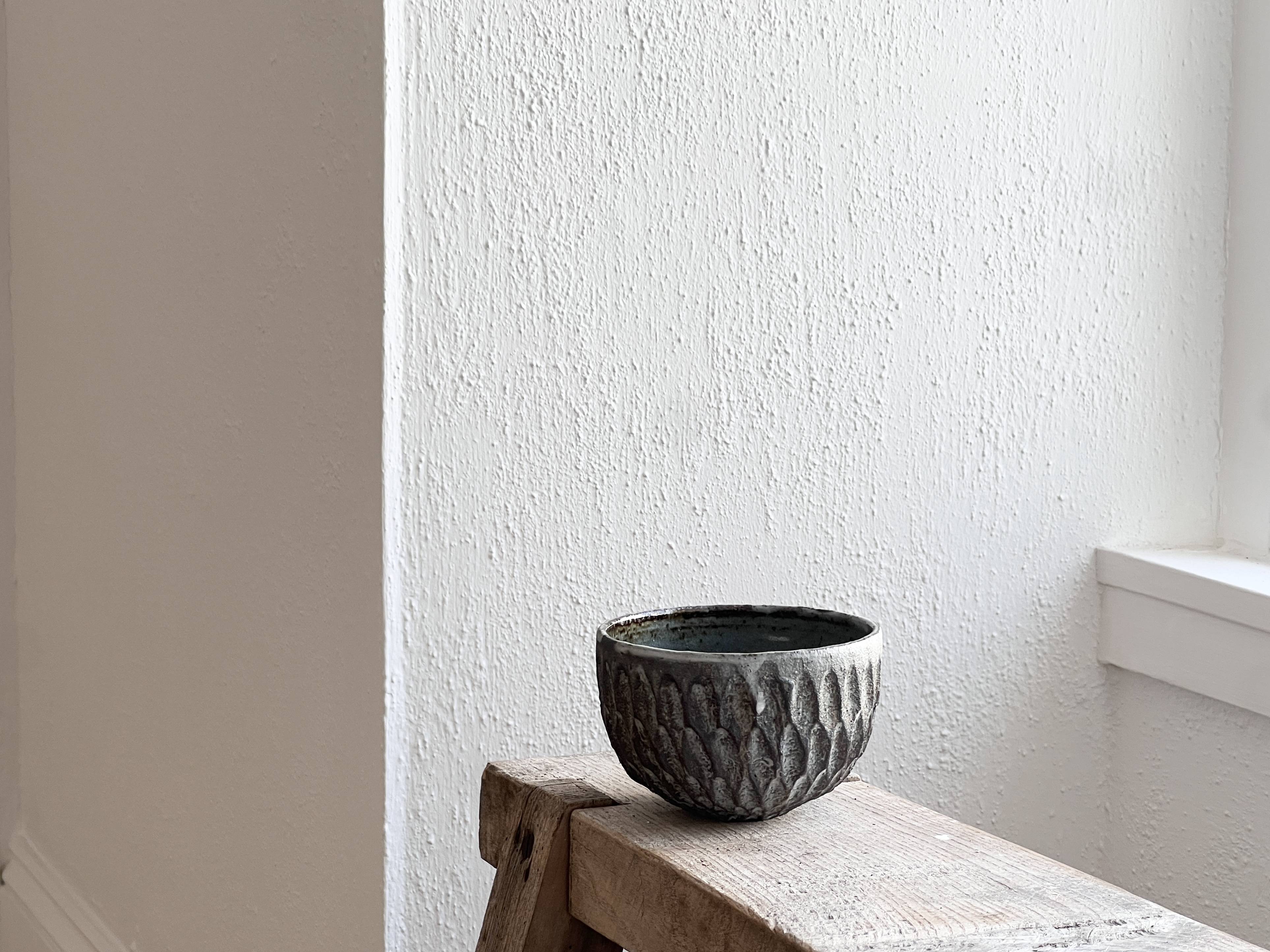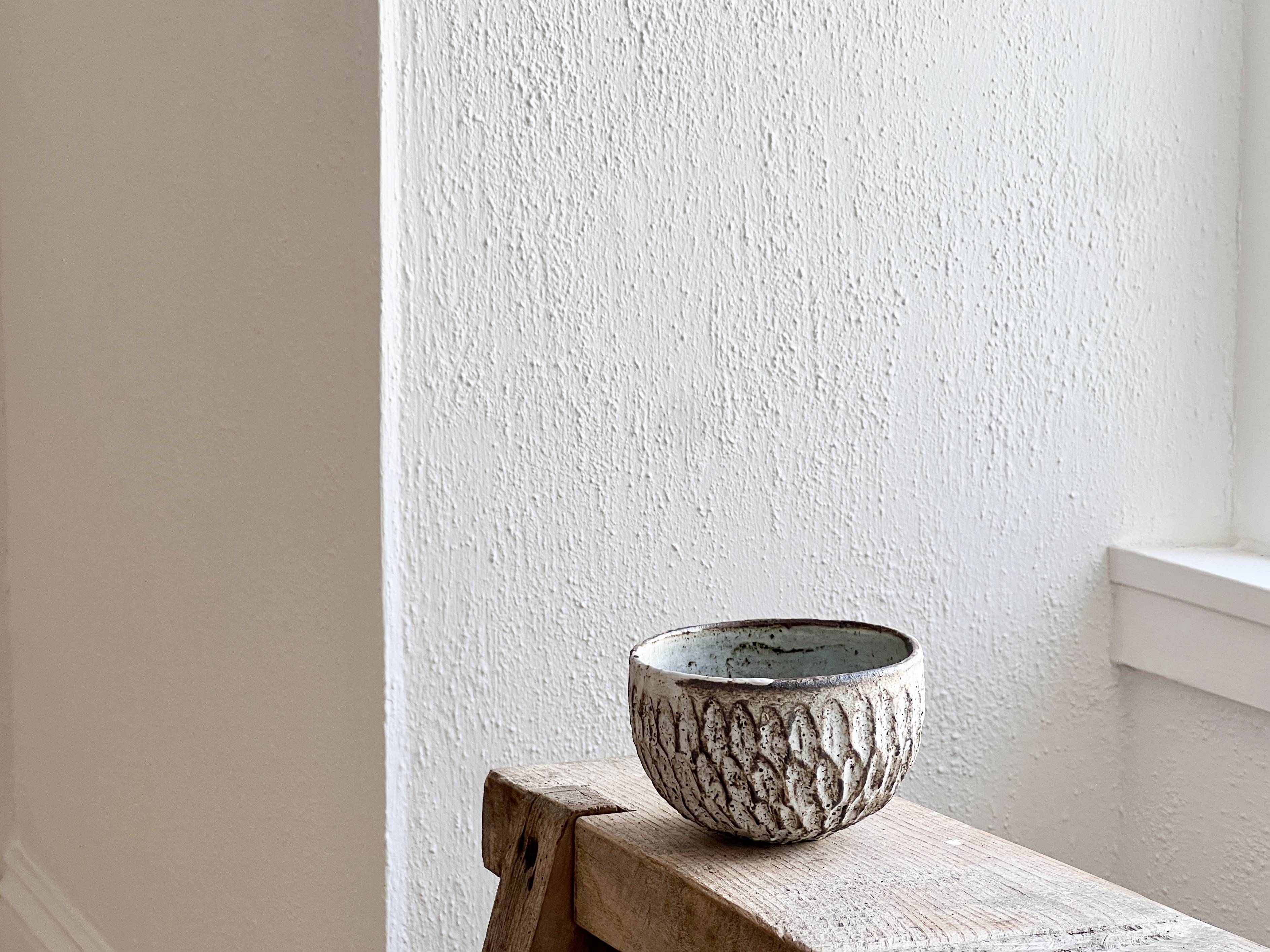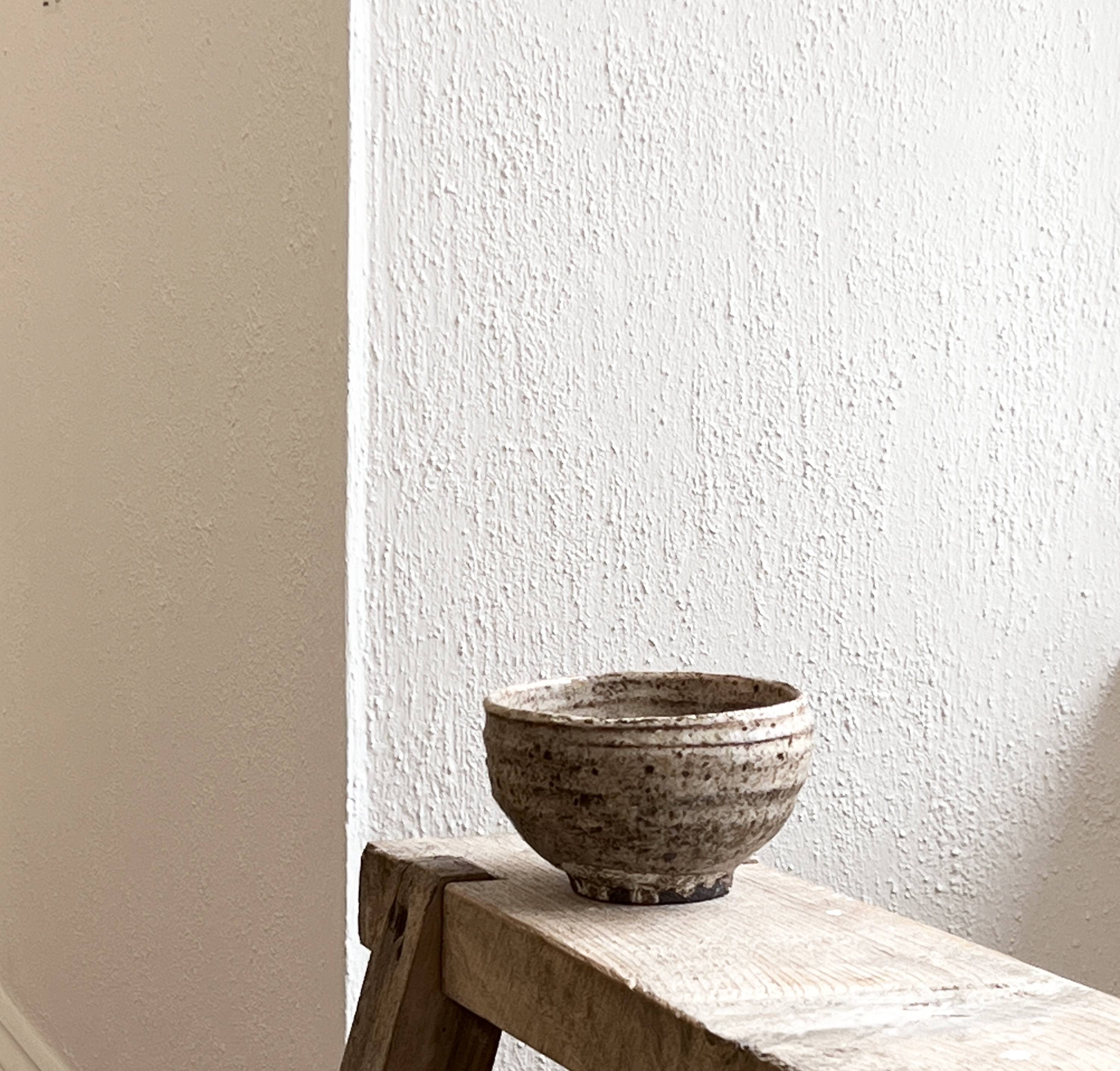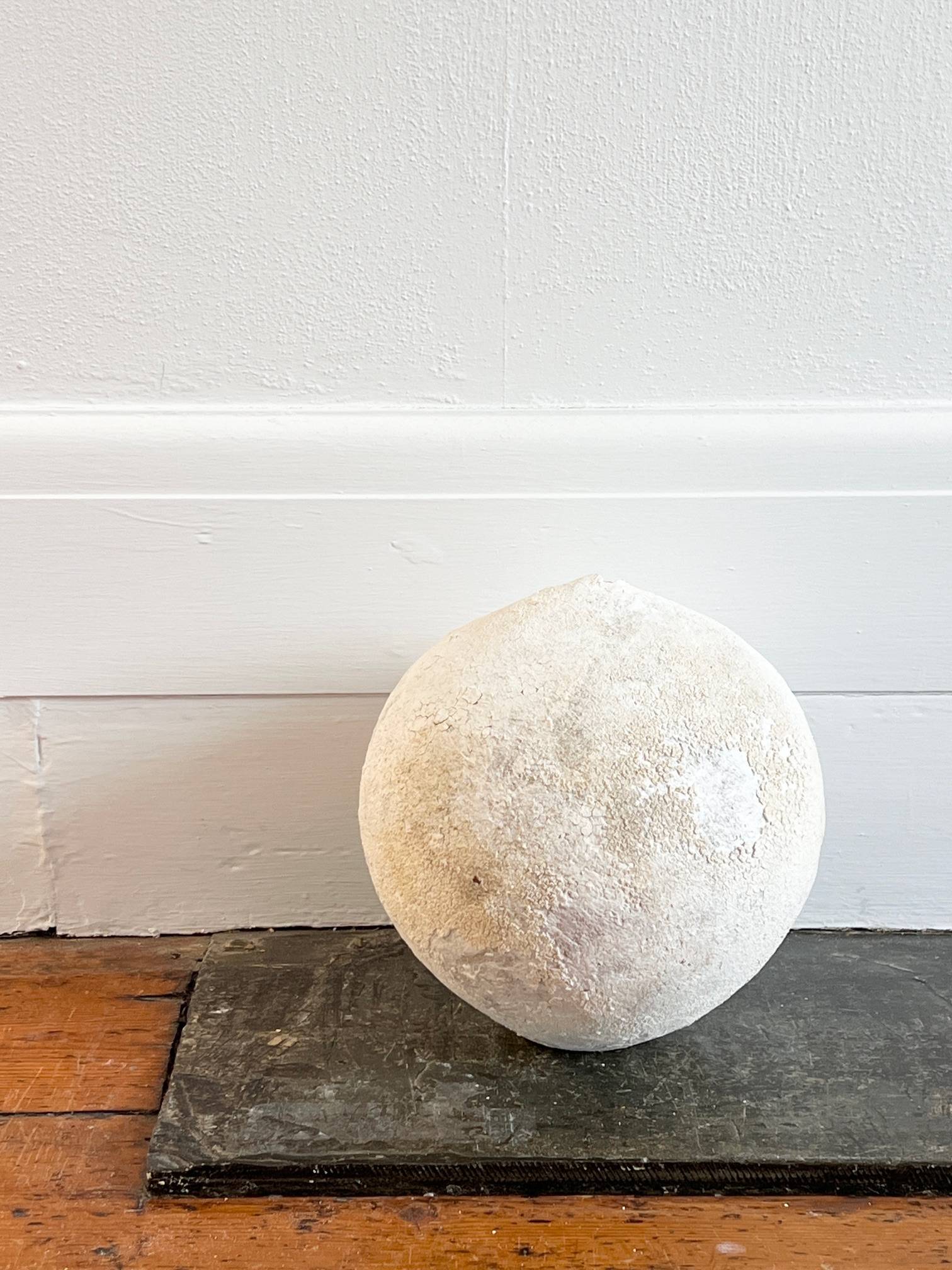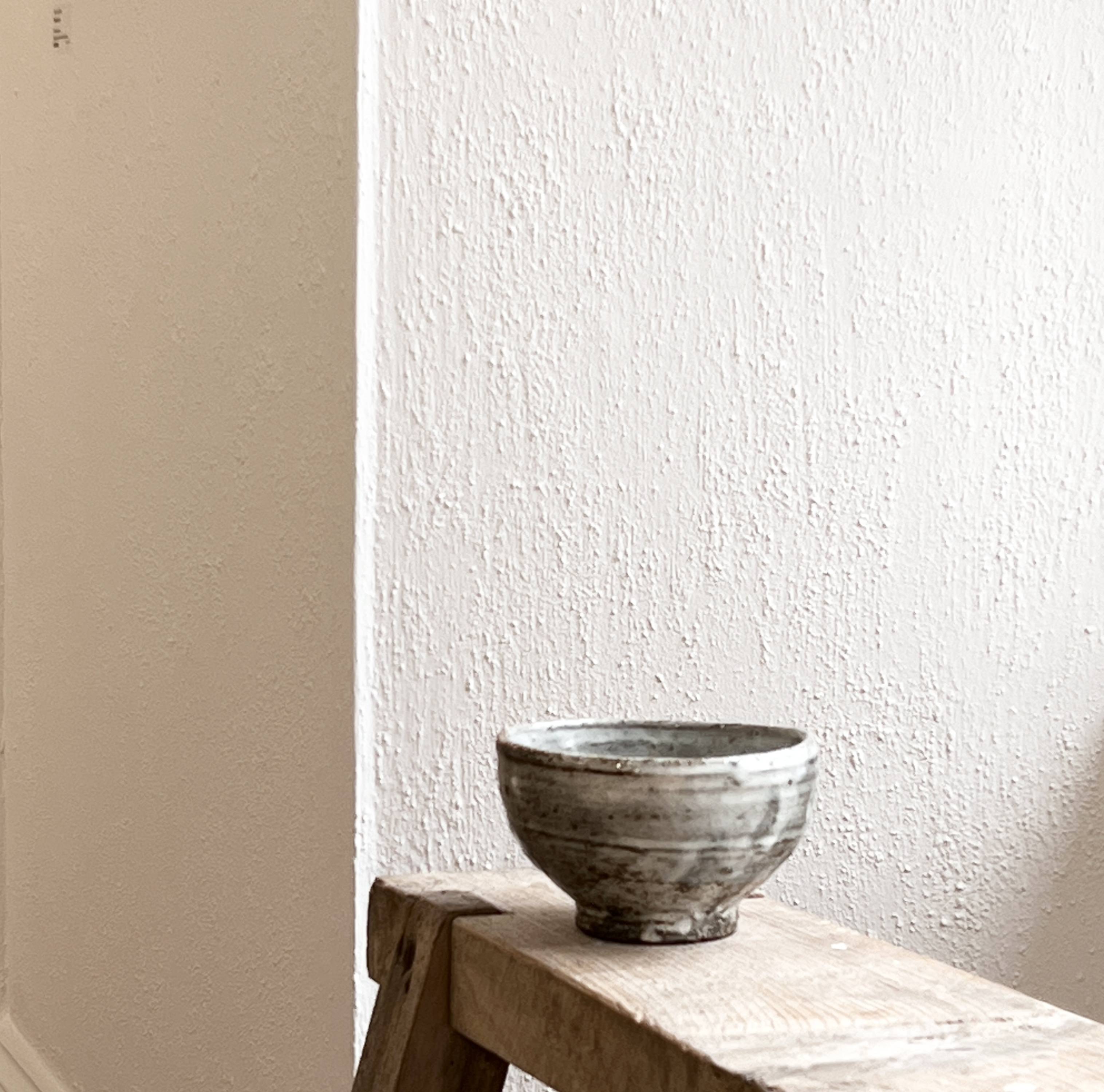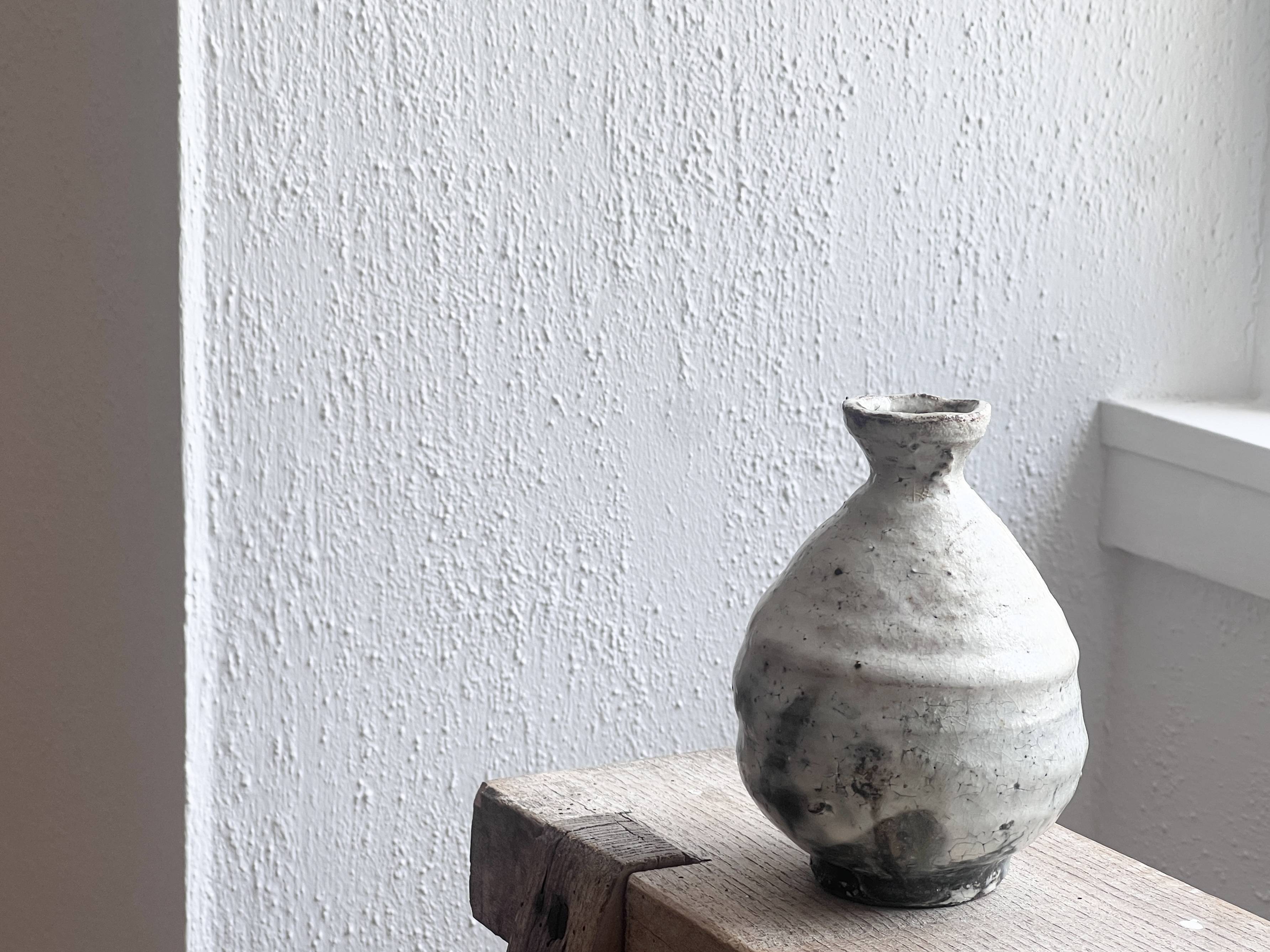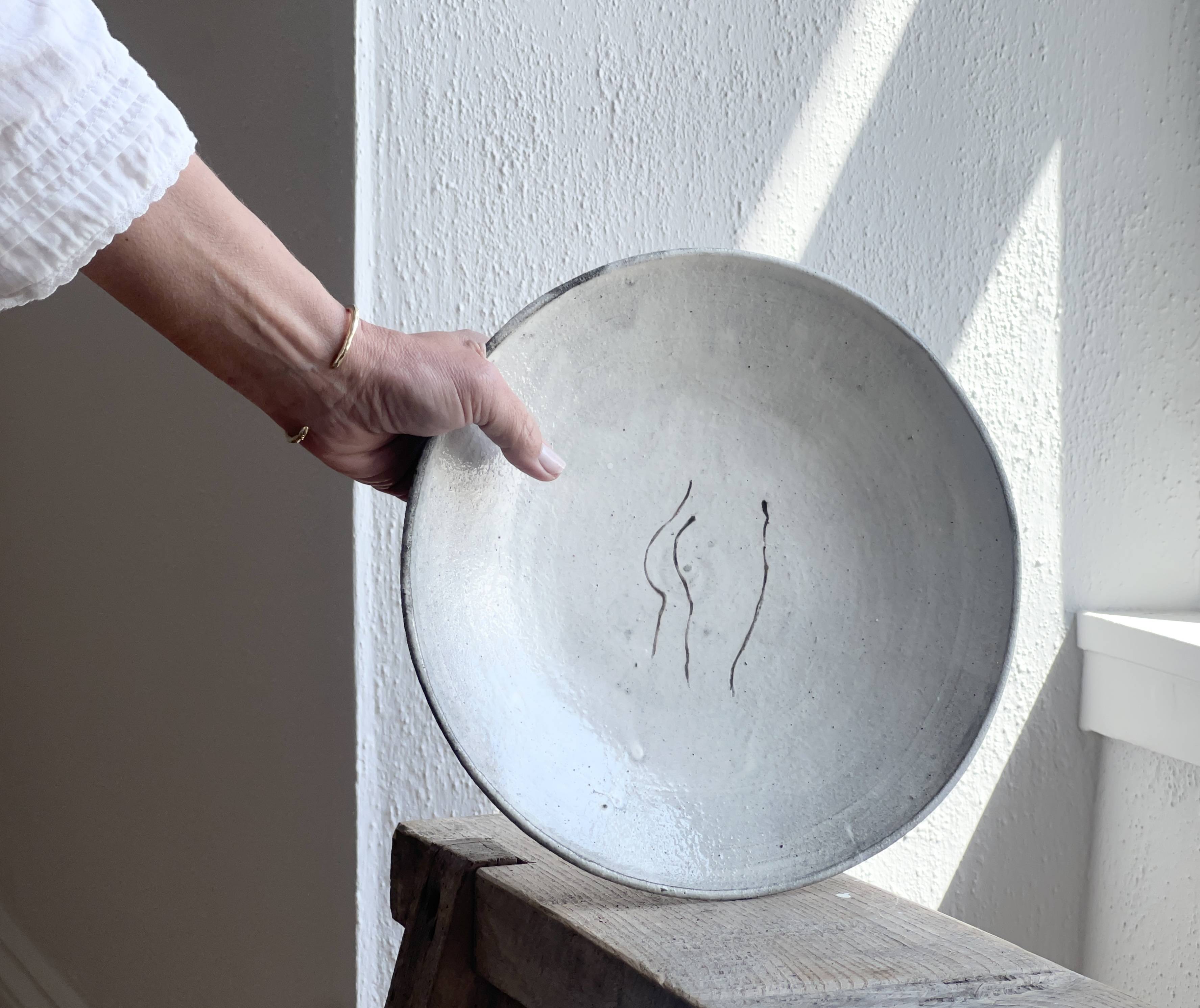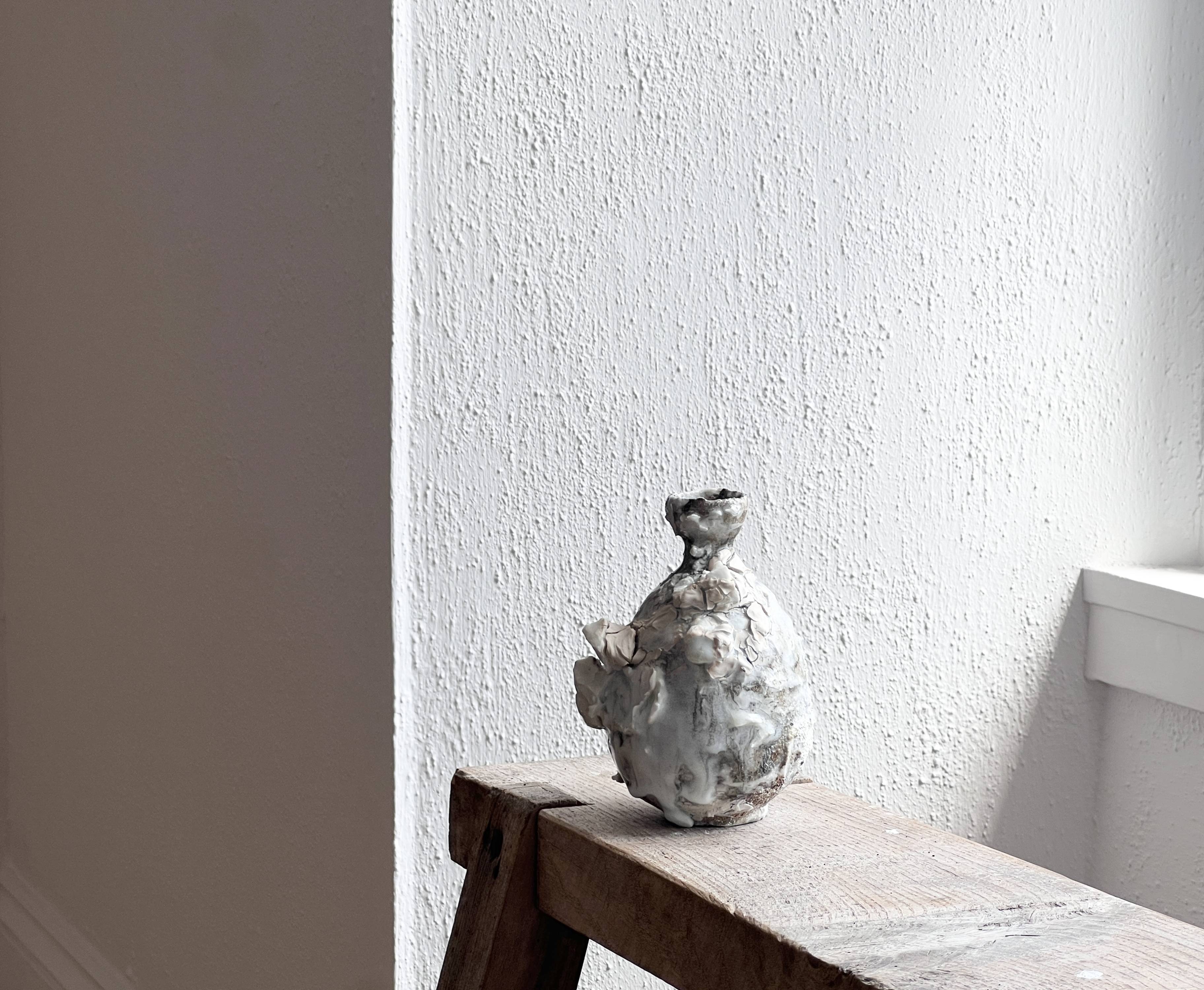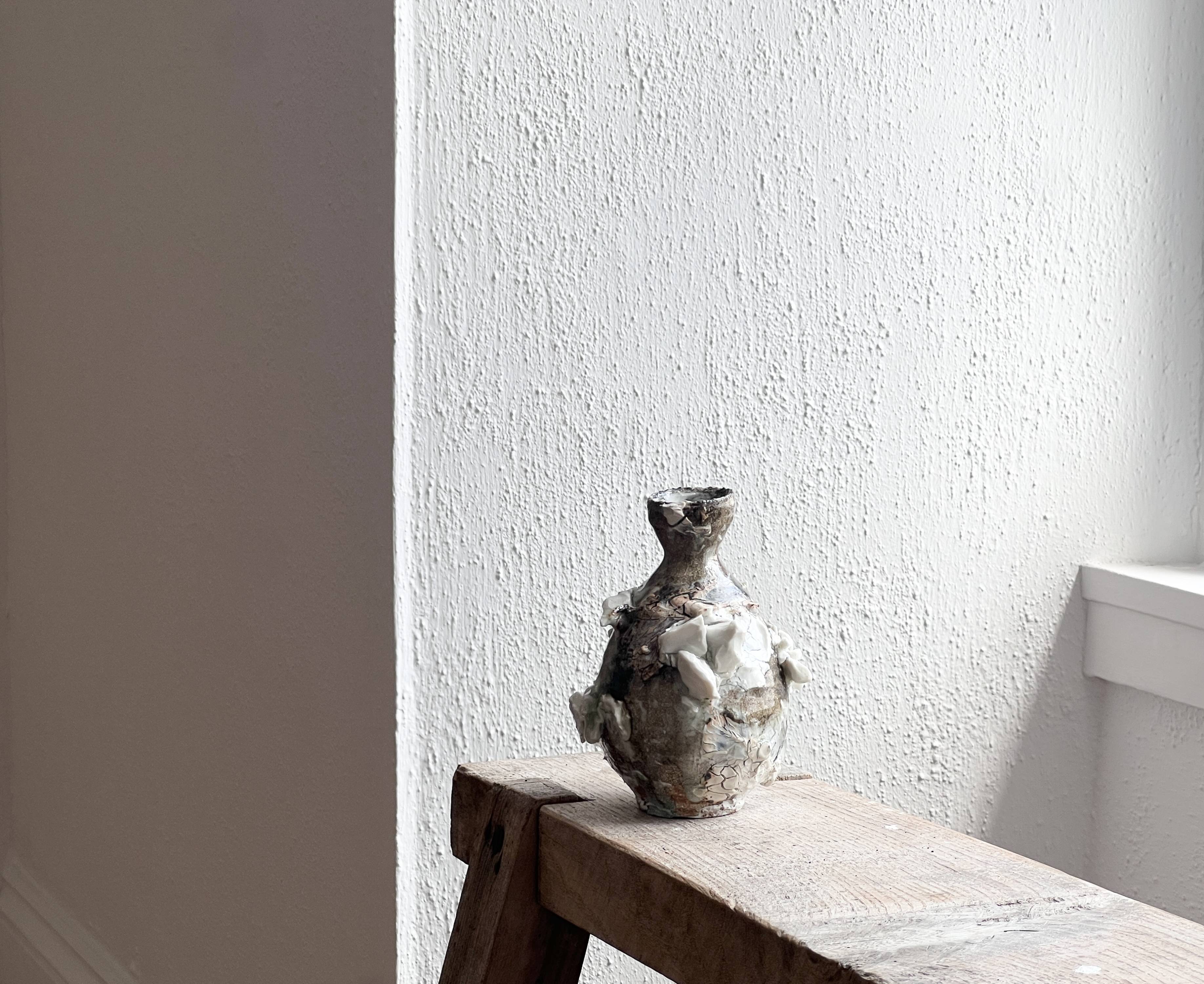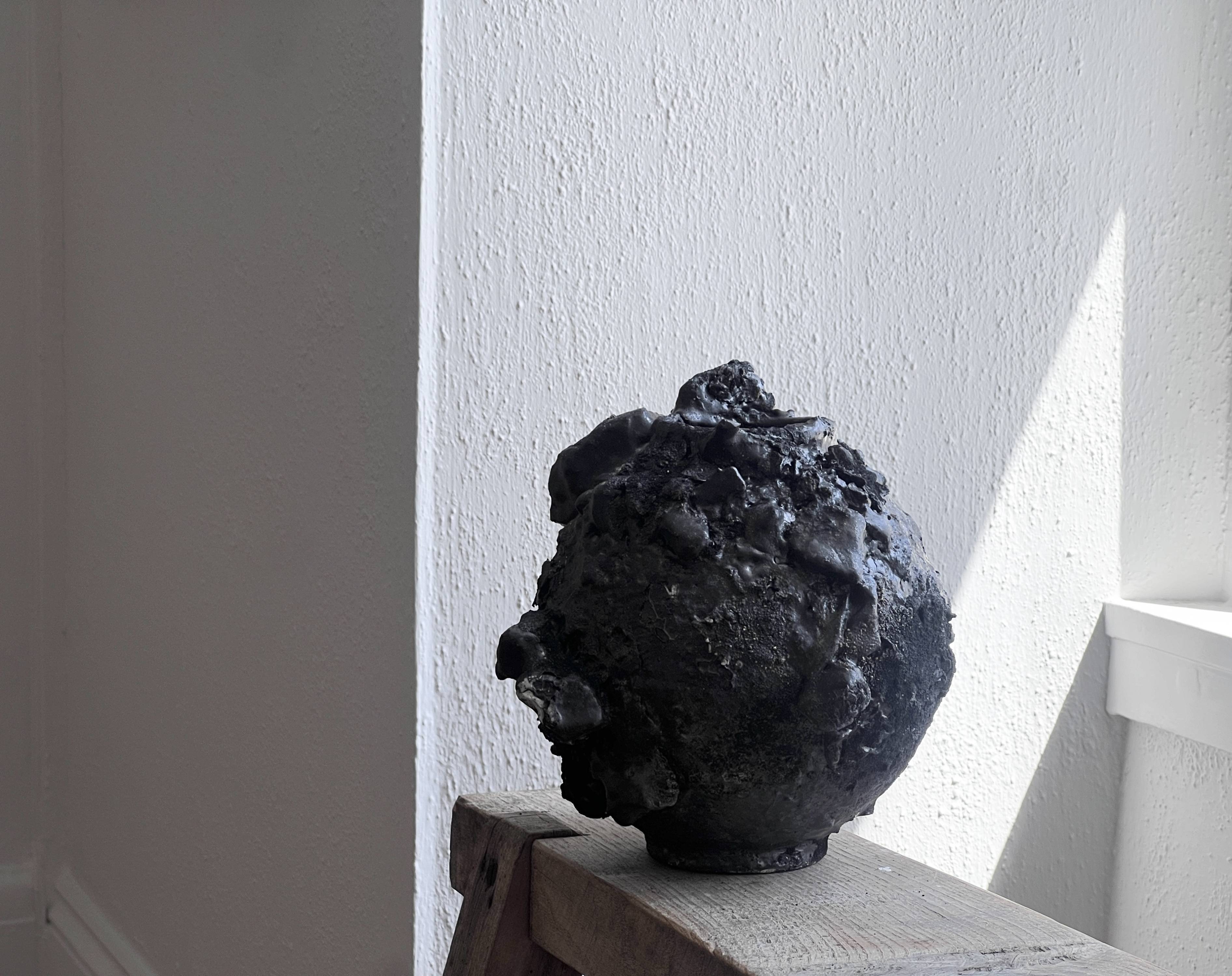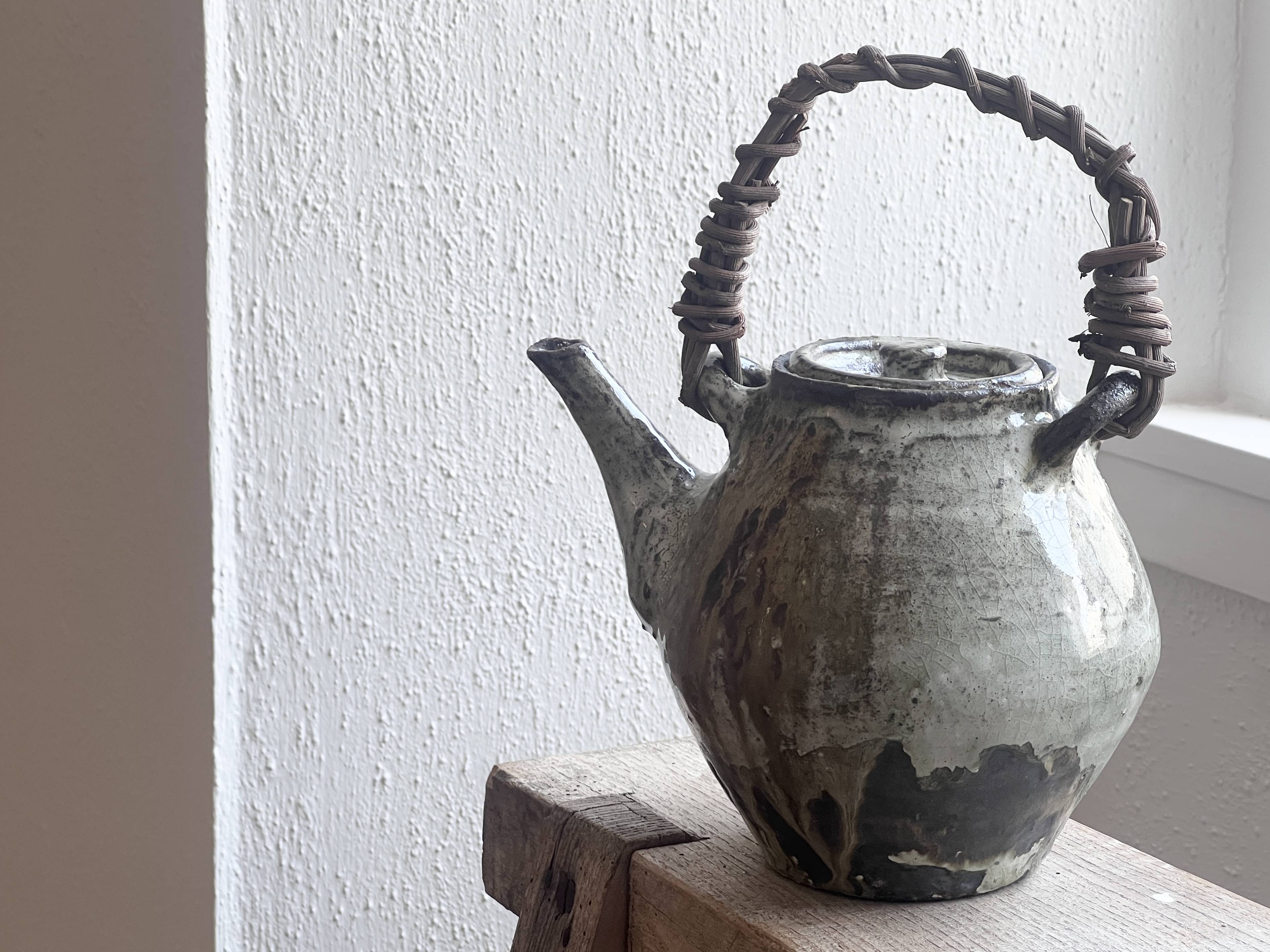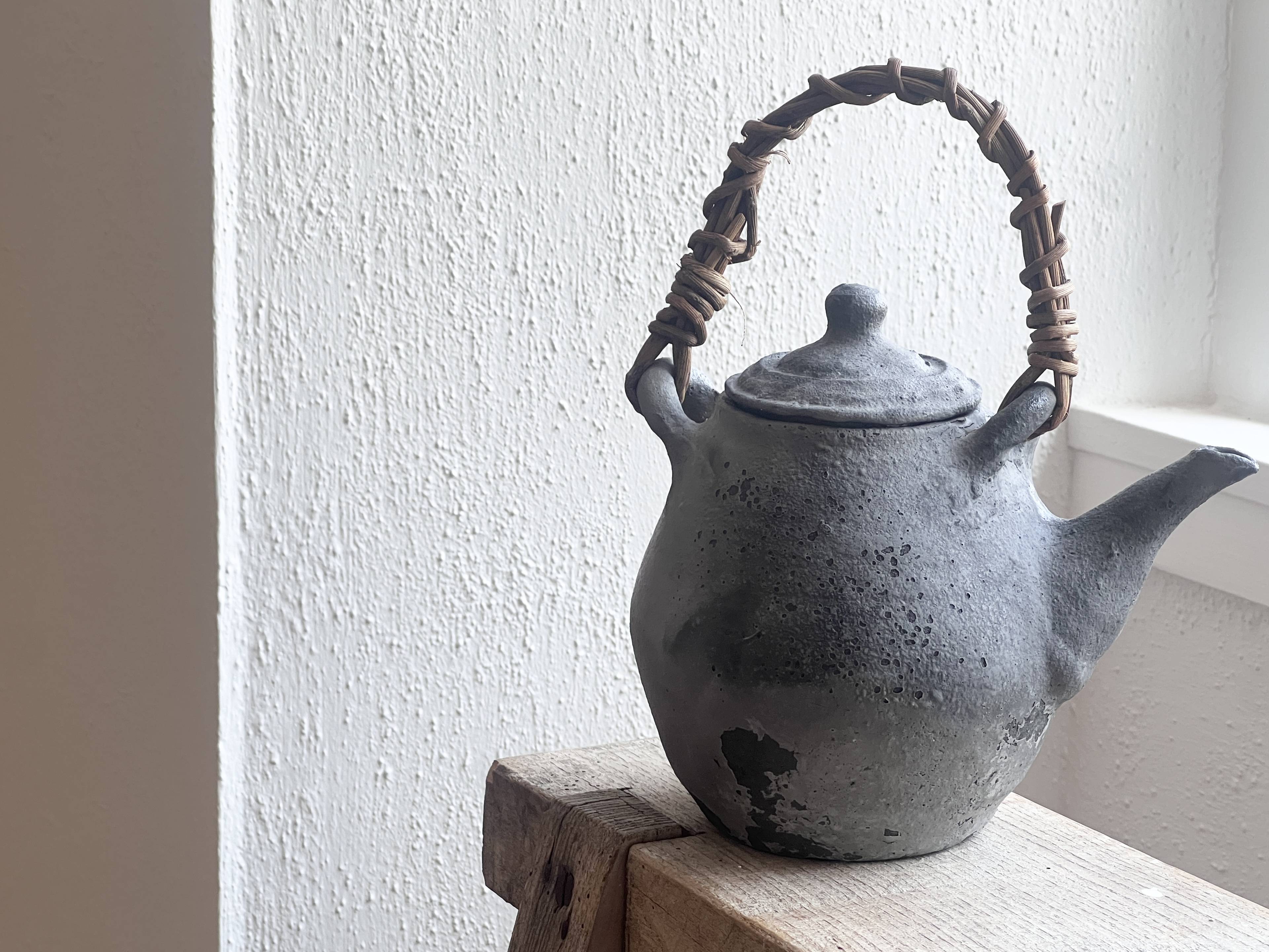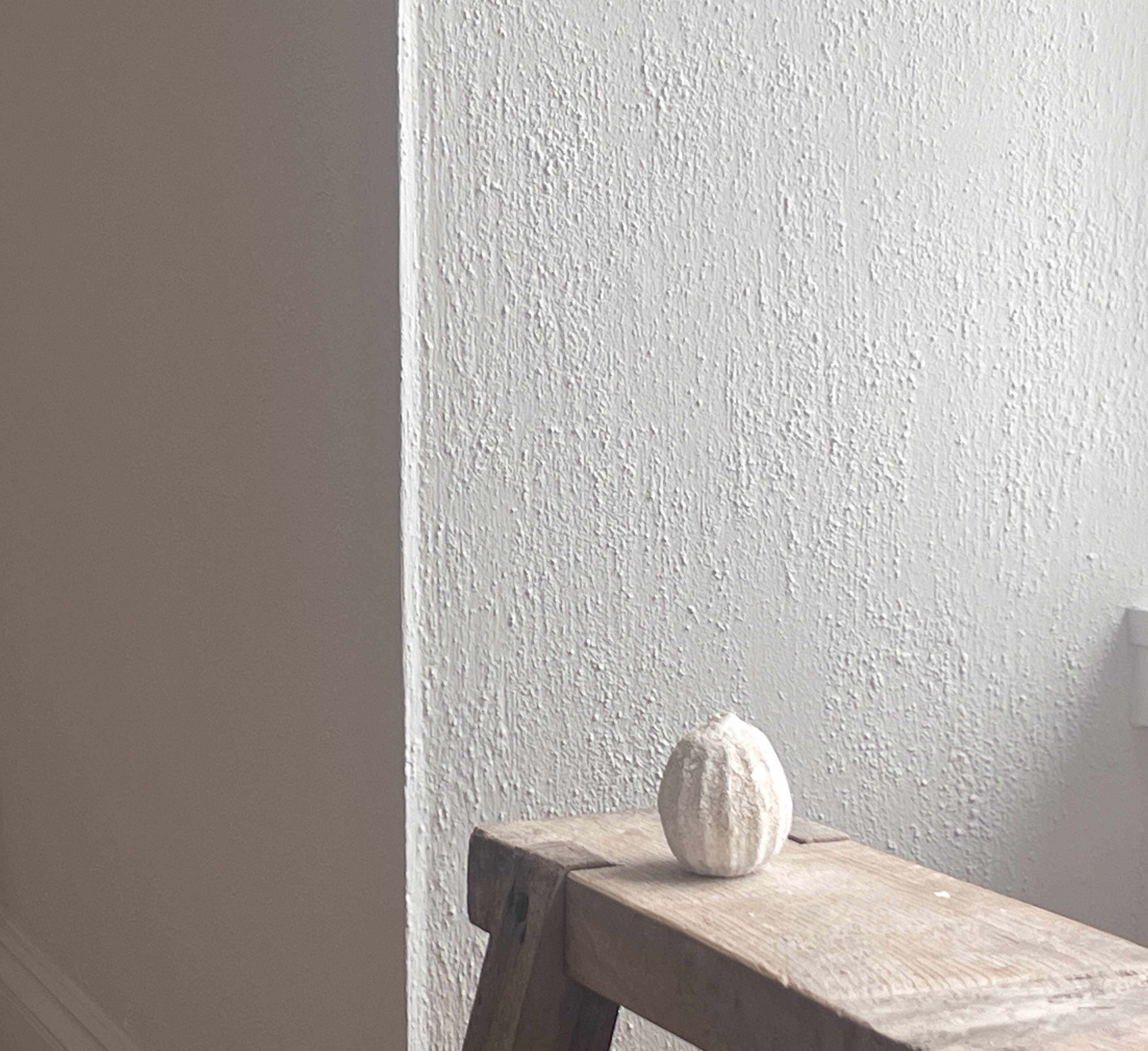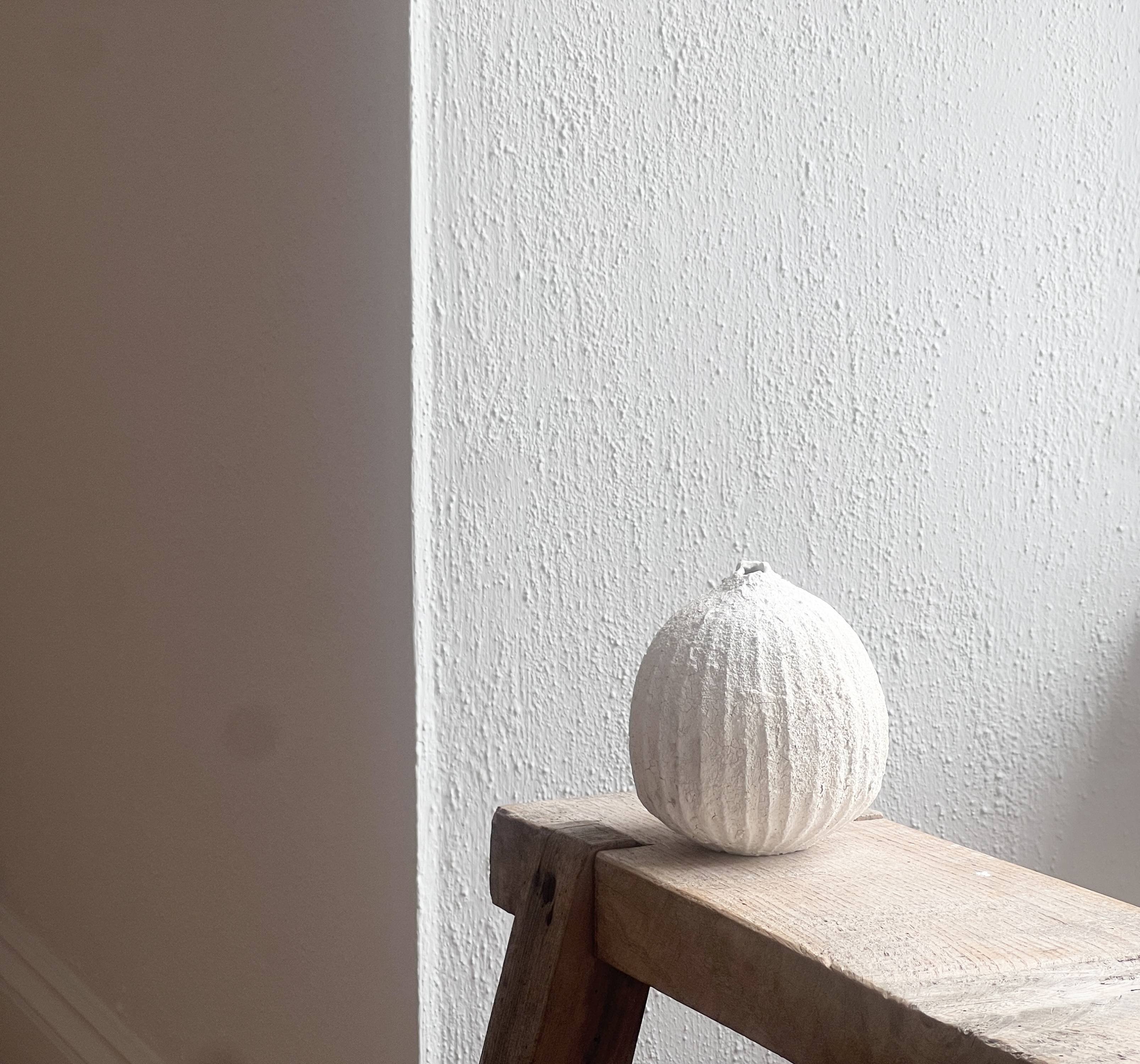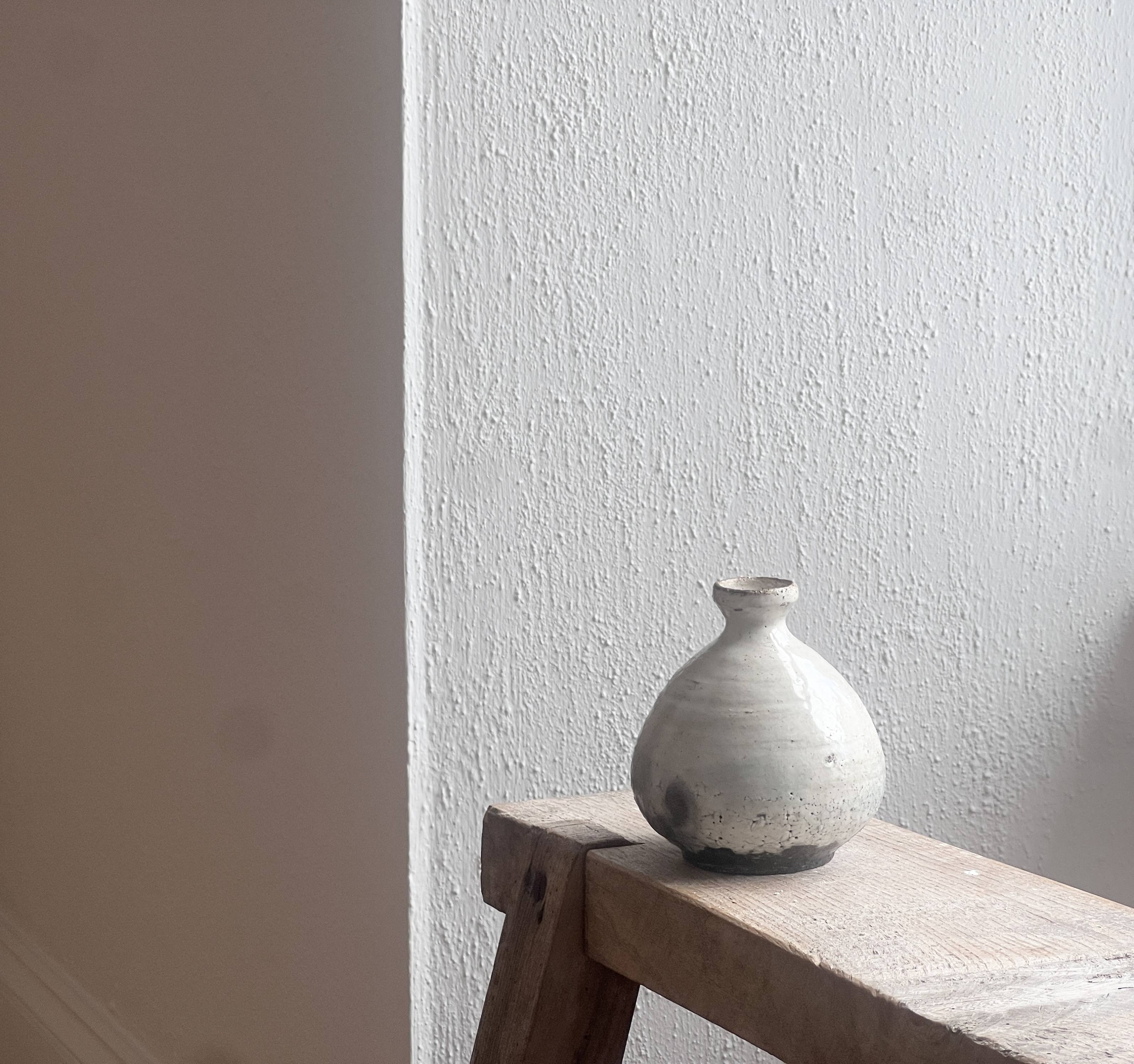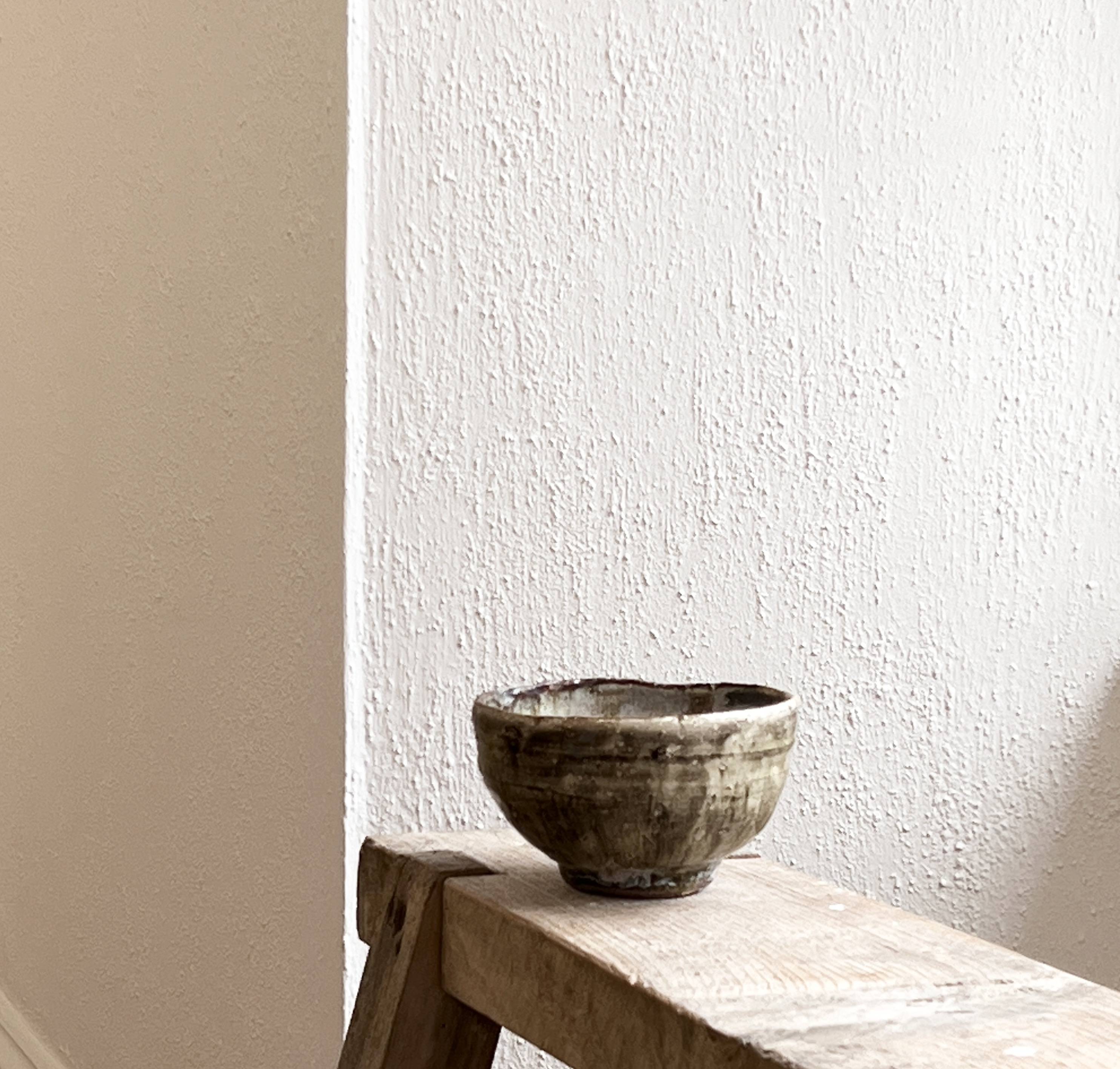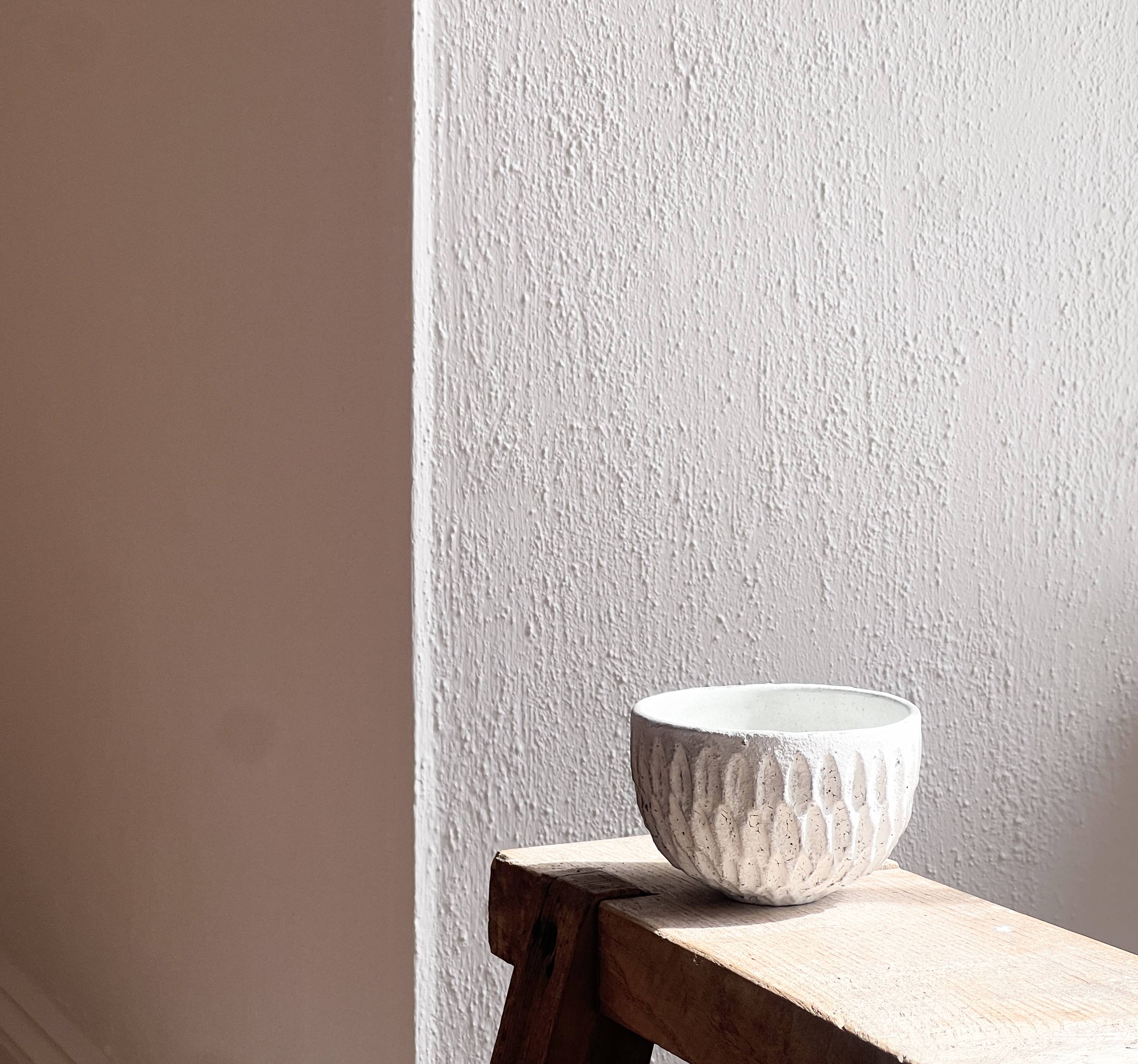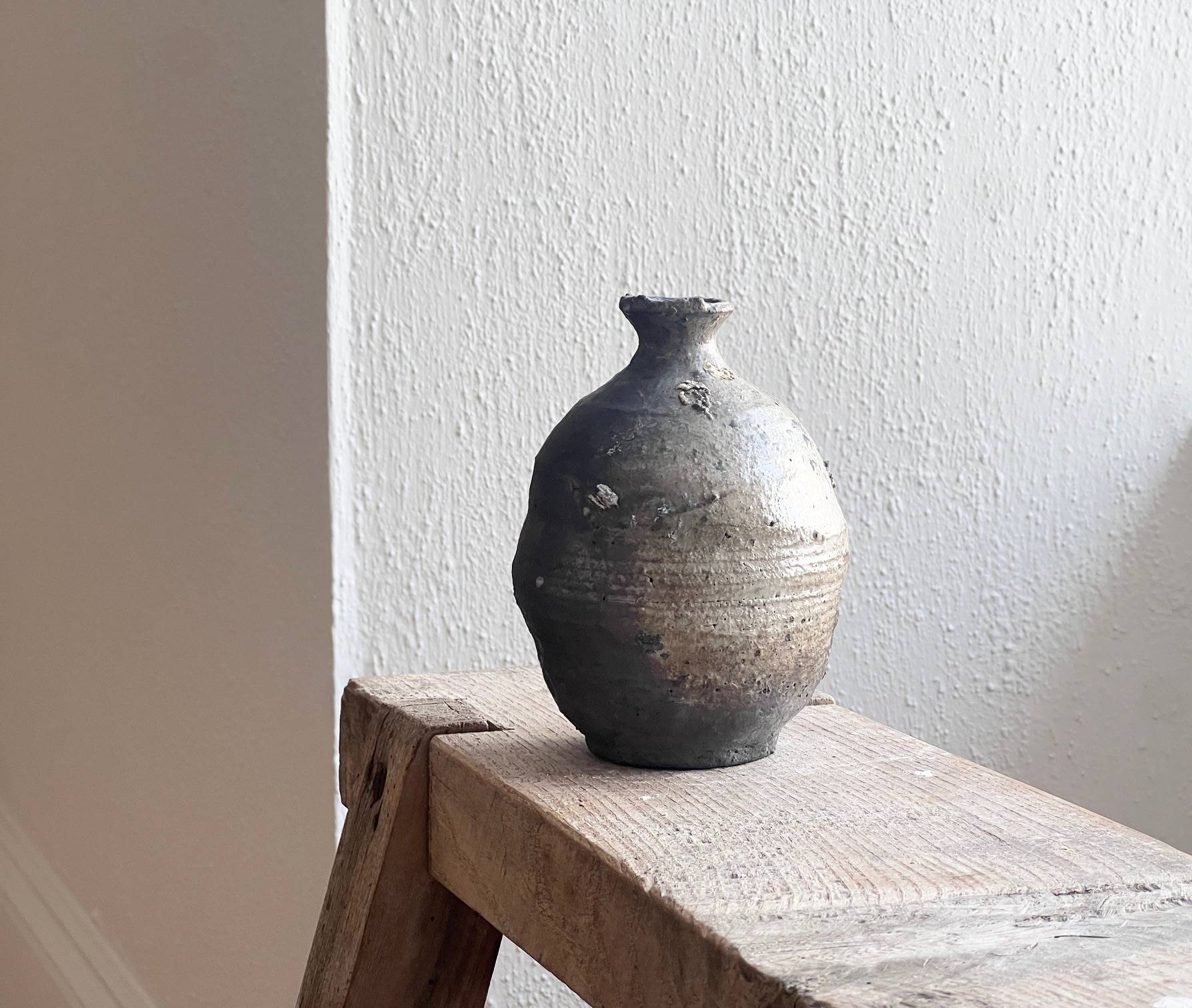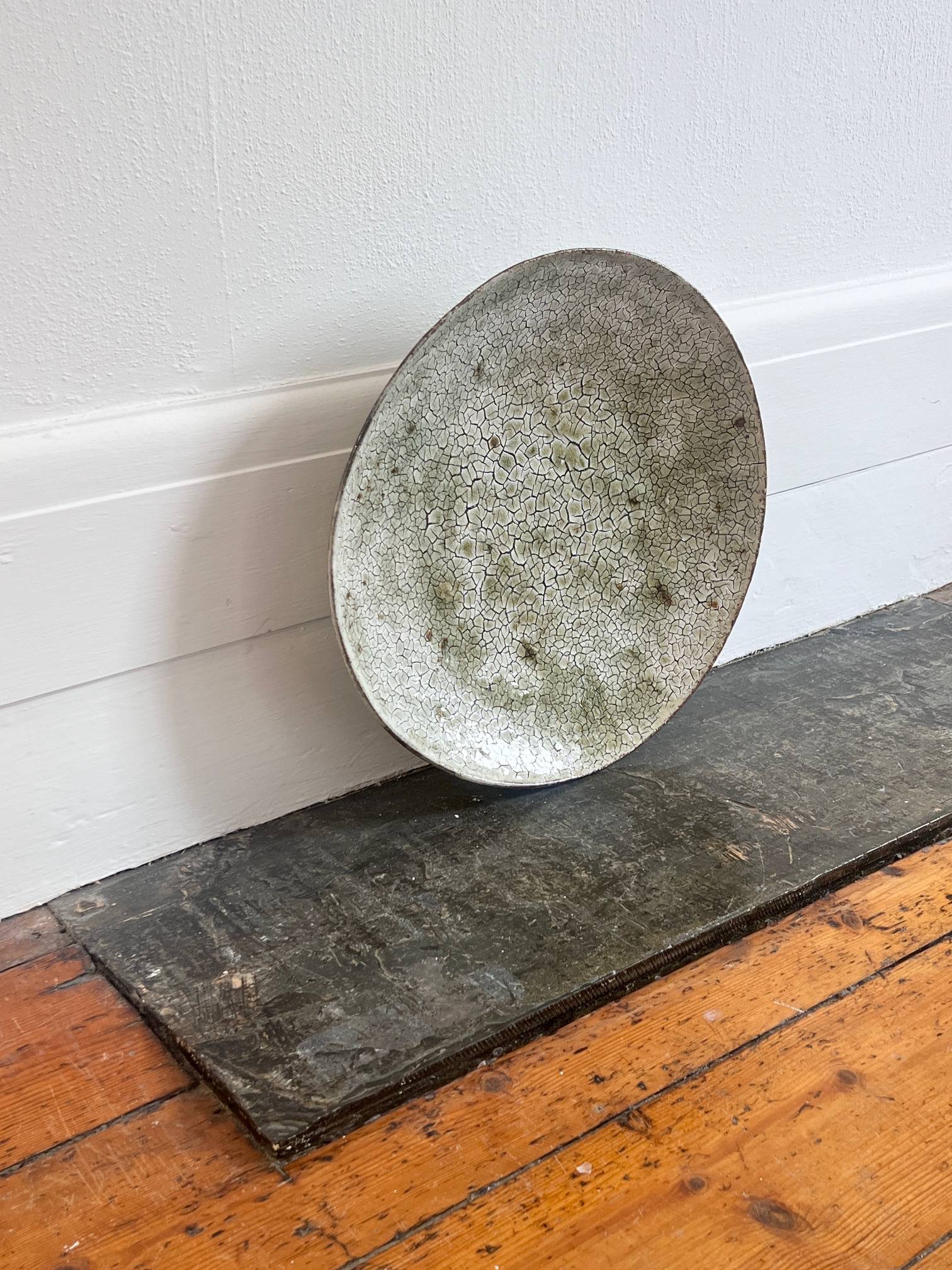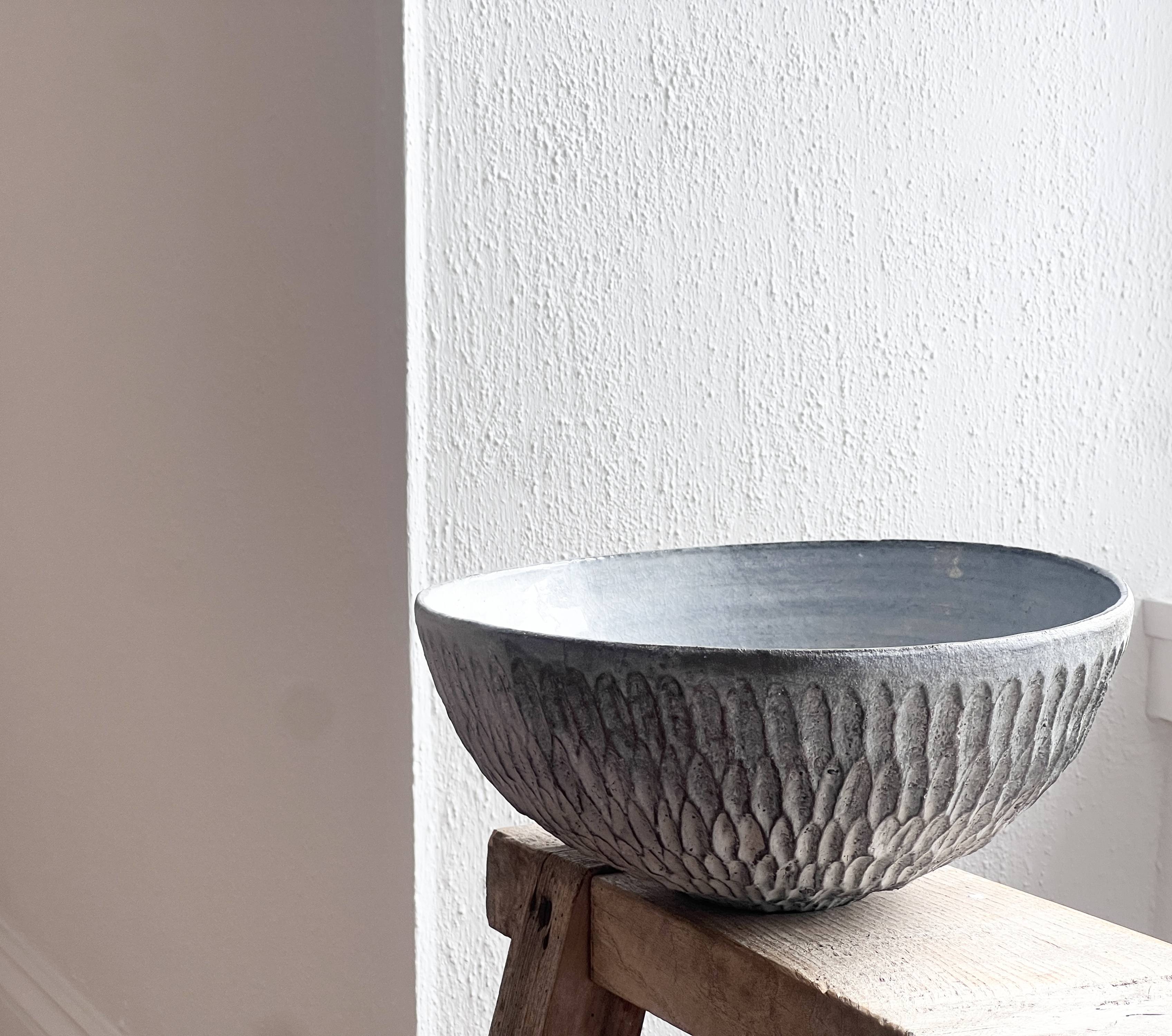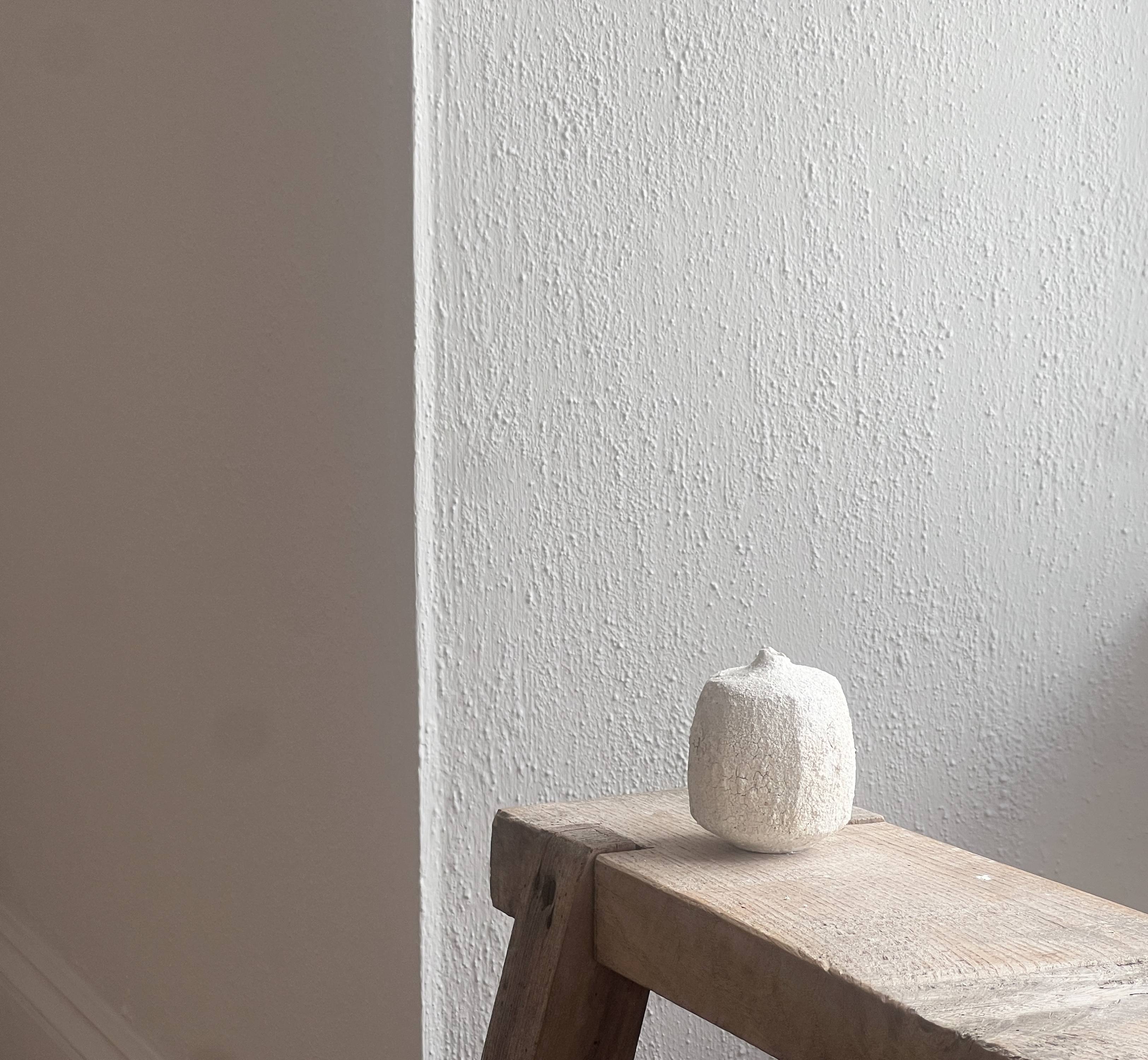26th May 2024 - 21st June 2024
Akiko Hirai | Onnagata
Akiko Hirai’s ceramic tableware fuses both Japanese and British ceramic traditions. This experimental new collection explores ideas of antiquity and deterioration. Her glazed surfaces deliberately resemble paint that has been peeled off by long exposure to sunlight, partly revealing a layer of rustproof paint underneath. These works explore ideas of chaos and unpredictability, and the concept of physical things and emotions combined in a way that moves the artist and the viewer towards a sense of ultimate stability.
This much anticipated exhibition will also include a series of Akiko's distinctive Moon Jars.
'It has been more than 30 years since I came to England. I have grown to become a Japanese person living in the multicultural environment of London. My pots are sometimes described as 'Japanese', but to be honest, my impressions of Japanese pots are as foreign as foreigners imagining Japanese pots. Japanese craftsmanship has many strict rules, and I did not learn those, but because I spent my childhood and youth in Japan, my aesthetic, and my way of seeing has been educated by a Japanese environment and so I natrually chose the 'Japanese style' as my preference.
In Japanese Kabuki theatre, male actors play female roles. They are called Onnagata.
Onnagata are more feminine than real women. The image of the Onnagata is thought to be a male idealisation of the female figure, though perhaps the concept of an idealised male or female figure no longer exists, we now recognize so many genders. My post making could be considered similar to Onnagata. I take references from Asian antique ware, and sometimes Palaeolithic and Neolithic pottery worldwide. Tea ware, jars and bowls are my favourites, but finding something really special takes effort, even when I am in Japan. I have a strong admiration for the wonky pots created by anonymous potters centuries ago, at a time when they were not so materialistic, and not so very prosperous either. Life at that time would not have been easy or comfortable, so the beauty I find in these objects may just be an illusion, an idealised beauty.
I started making sake bottles for this exhibition , after previous experiments, with irregular textures on their surfaces. It might be wrong to describe them as 'textures' as they resemble pain peeled off by long exposure to sunlight, where the rust proof paint underneath is partly exposed, more like a deterioration. this is what I wanted on my posts. These pots have been fired several times to make the glaze richer where the white slip has peeled off. All this is still in the experimental stage. Inside of me I have a vague image of my ideal pot, a mixture of pots I imagine and the accumulation of my everyday experiences. this how my illusional pots are made. This ideal pot is made out of chaos. Unpredictability and chaos, though, are not synonyms, as chaos is deterministic. I have read many books about the function of emotions. I still don't know what emotions are, but it seems to me that emotions regulate chaos, giving direction to the physical phenomena that are found in chaos. When physical things and emotions are combined, two or more apparently irrelevant things are joined together and move towards something more stable. The creation of new artefacts and art are the byproduct of this process
Akiko Hirai, May 2024
Akiko's work will be published for sale online from 28th May.








